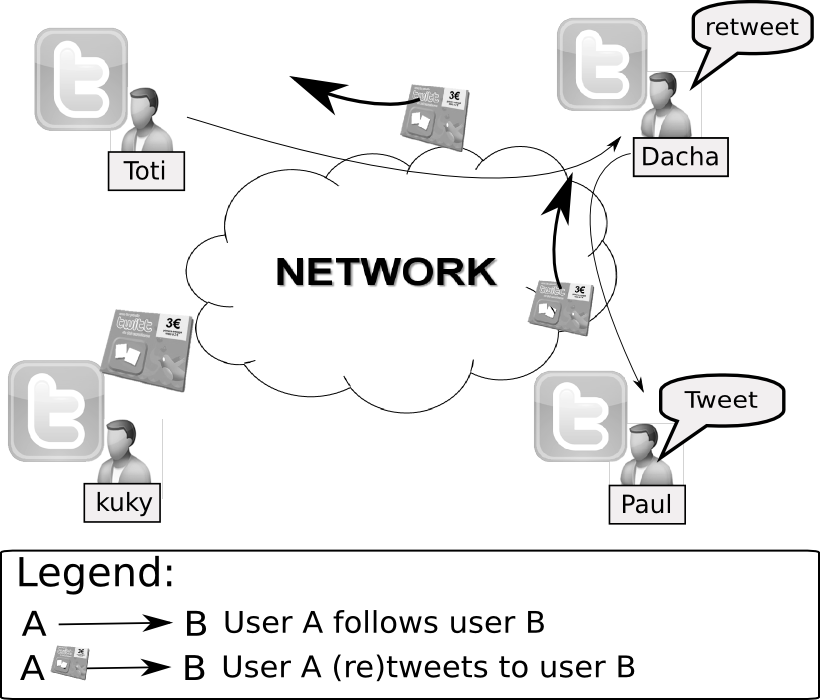Social network applications like Twitter and Facebook are another kind of Web application. Nowadays, these applications are widely used, making the analysis of their flow of information an active research topic. This flow of information is analyzed through the messages sent and received between users of these applications. Such an analysis is complex due to the need to observe and react to distributed causal relations that occur among user interactions. As an example of the analysis of the flow of information in Web applications, consider the calculation of the popularity of user tweets in Twitter:
Tweet popularity. This feature in Twitter allows a user to know the popularity of every tweet published by him or her, which is measured by the number of retweets of direct and indirect followers. For example, the figure shows four Tweeter users: Toti, Dacha, Kuky, and Paul. Toti follows Dacha and Dacha follows Paul; Kuky follows nobody and nobody follows Kuky. The figure shows that Paul publishes a tweet and Dacha receives this tweet and retweets it. The figure also shows that Kuky publishes a tweet and nobody receives it. Based on the popularity measurement, the popularity of Paul's tweet is 1 and that of Kuky is 0. Although Kuky and Paul would have published the same tweet, the popularity of Kuky's tweet is 0 because his tweet did not cause any retweet. An analysis based on the distributed causal relations observed between tweets and retweets can determine how many users retweet a given tweet. For example, Paul's tweet caused Dacha's retweet.
Using WeCa, which combines stateful aspects and vector clocks, we show how to react to distributed causal relations to determine the tweet popularity:
Go WeCa home.
